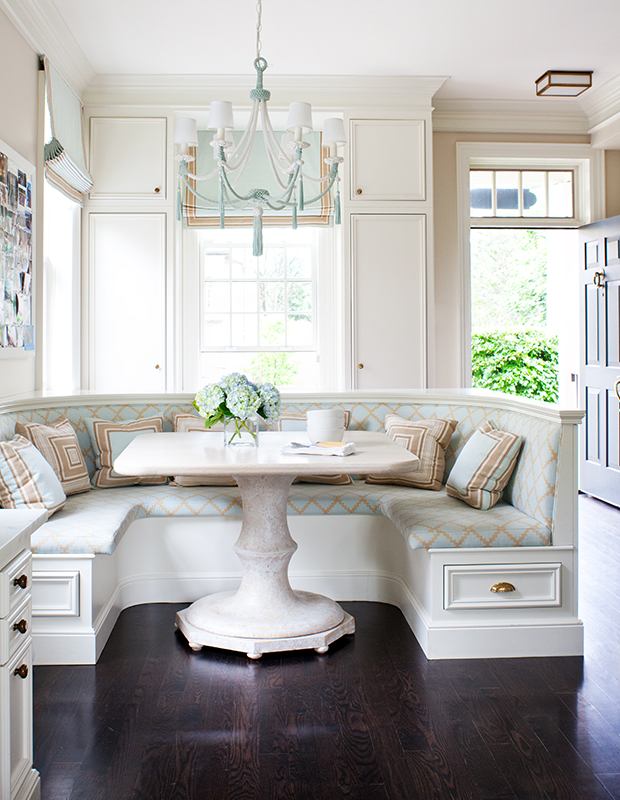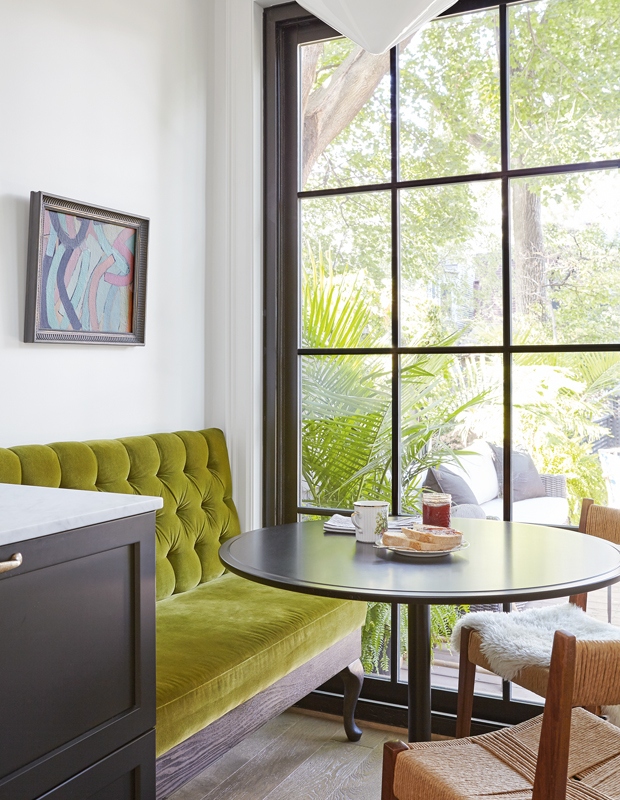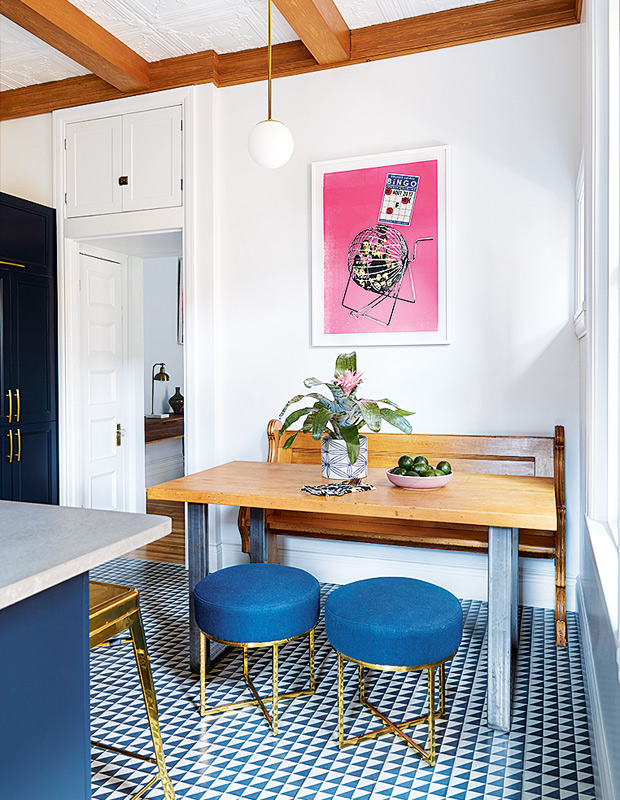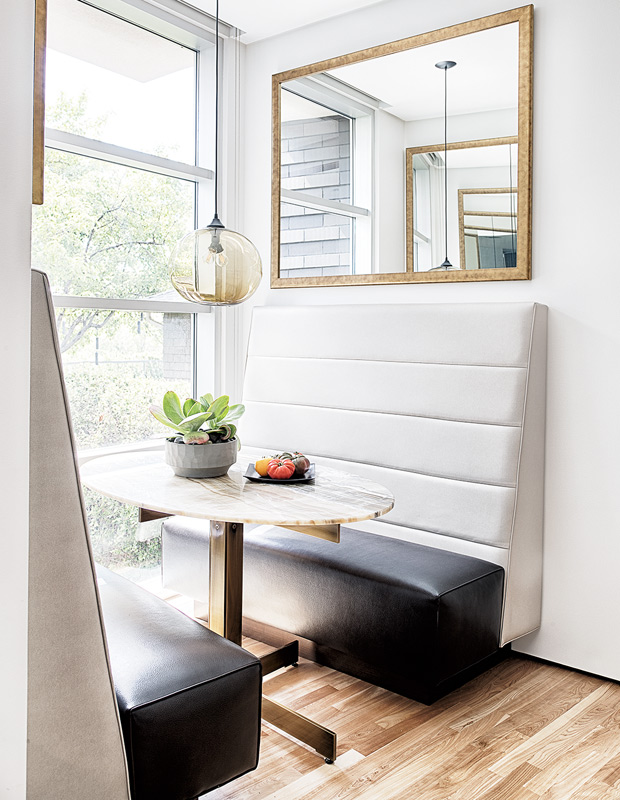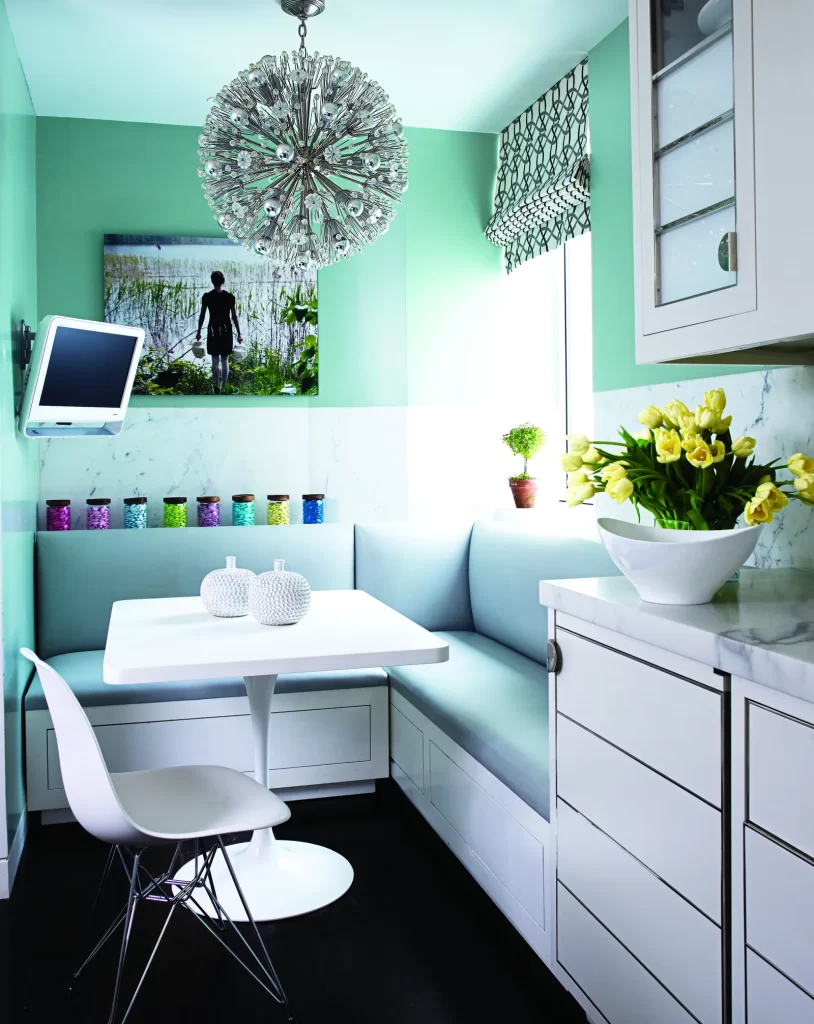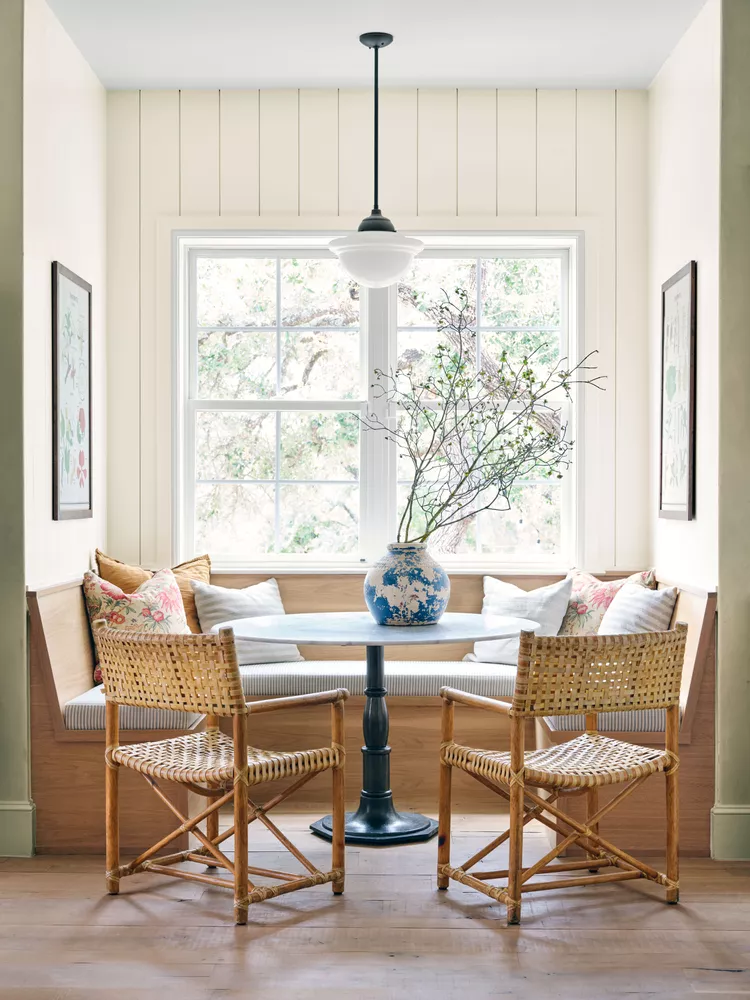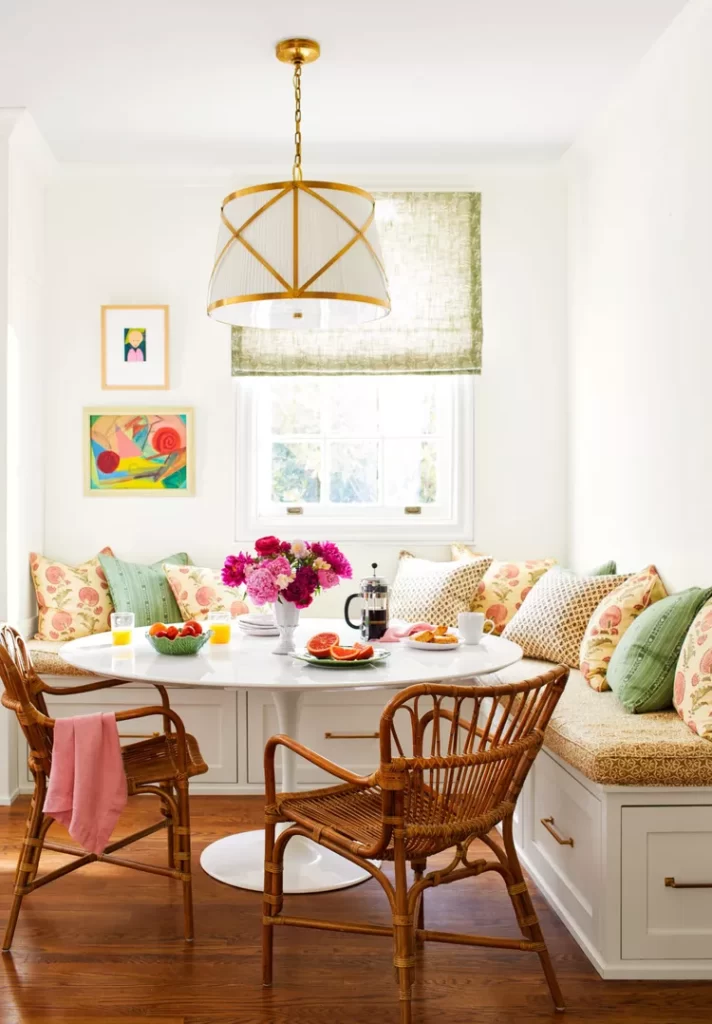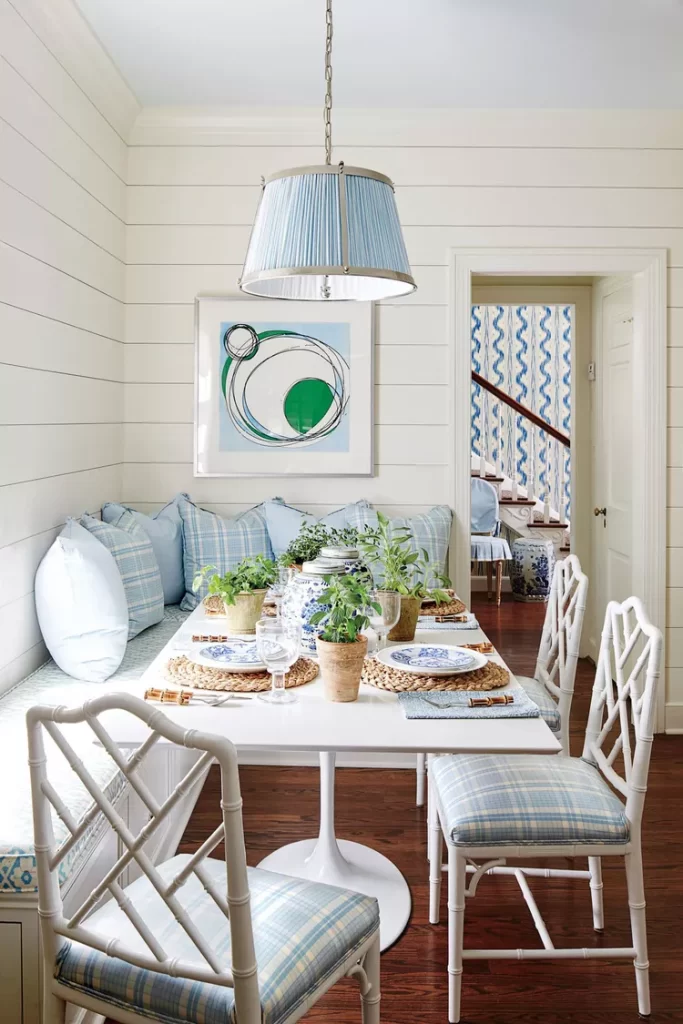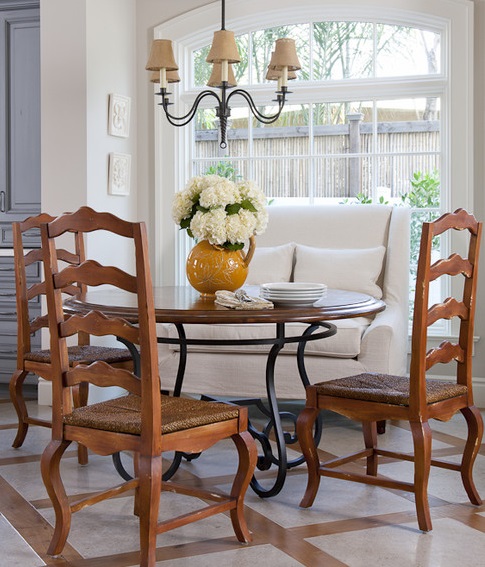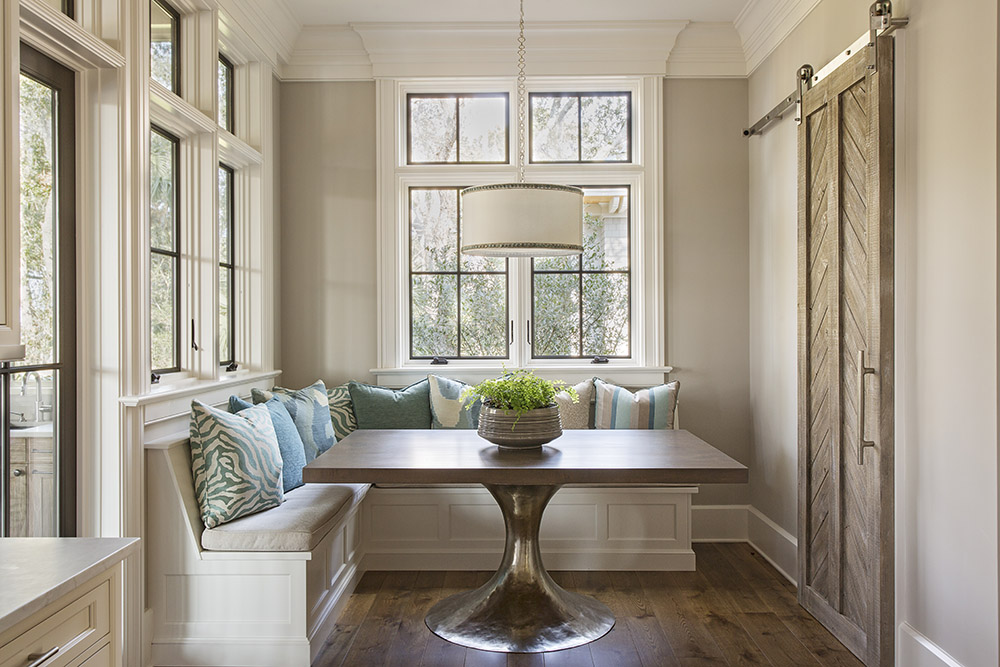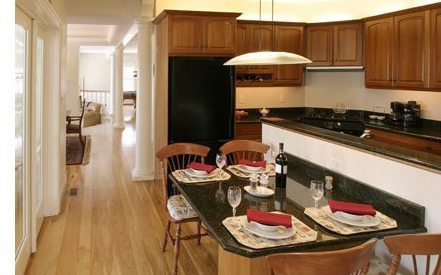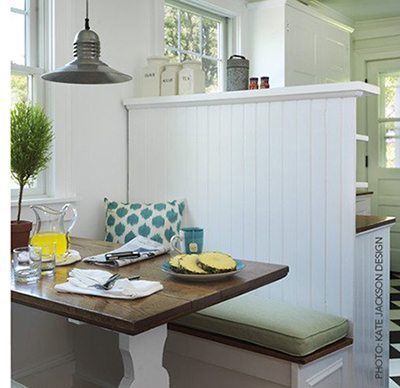Nook & Cranny: The Banquette Obsession
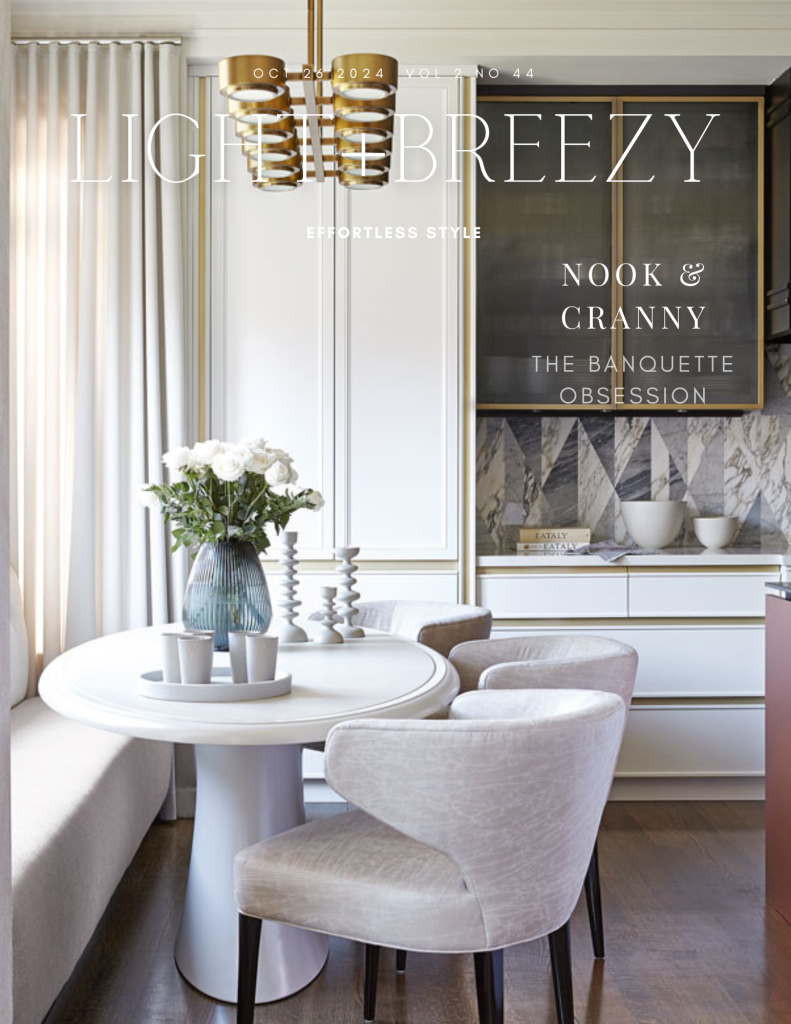
The Corner Table
What happens when diner-style comfort meets high design? Magic
Remember that corner booth at your favorite local diner? The one where conversations flowed as freely as the coffee, and somehow the pancakes tasted better than anywhere else in the house? That’s the magic of banquette seating – and it’s time to bring that cozy charm home.
The humble dining nook has evolved far beyond its 1950s diner roots. Today’s banquettes are architectural chameleons, adapting to spaces both grand and modest while offering that ineffable quality that makes any meal feel more intimate. Whether you’re sipping your morning coffee or hosting a dinner party, there’s something about sliding into a well-designed banquette that just feels right.
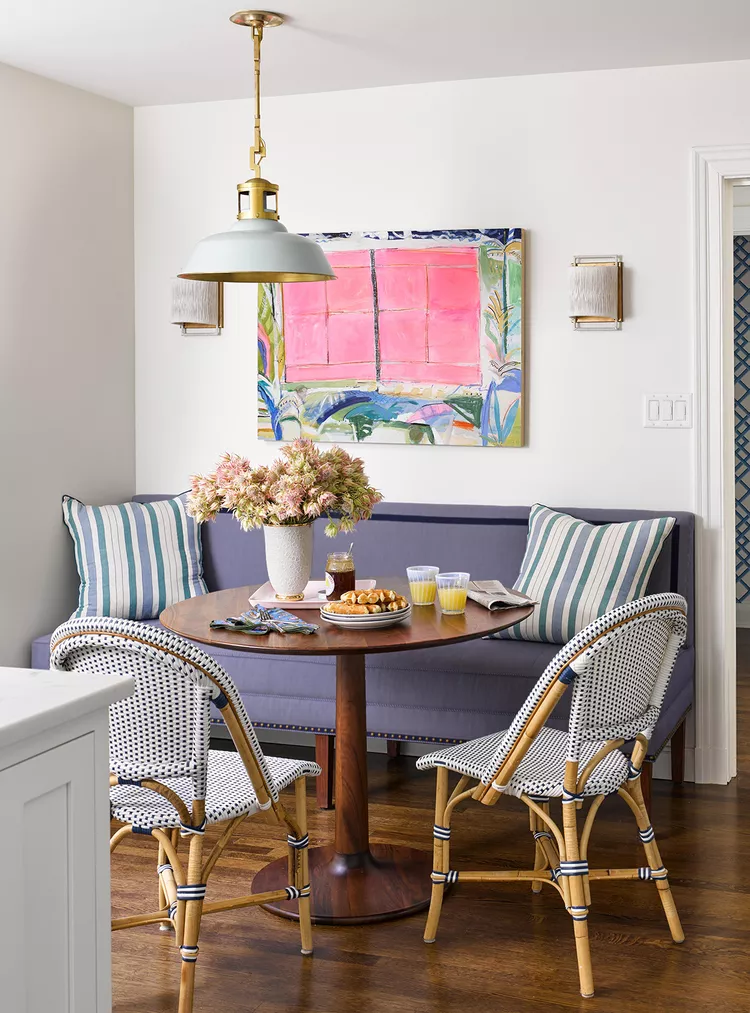
People gravitate toward banquettes because they speak to our primitive need for shelter and communion. It’s like creating a cave within your home – a protected space where you can observe your surroundings while feeling safely ensconced.
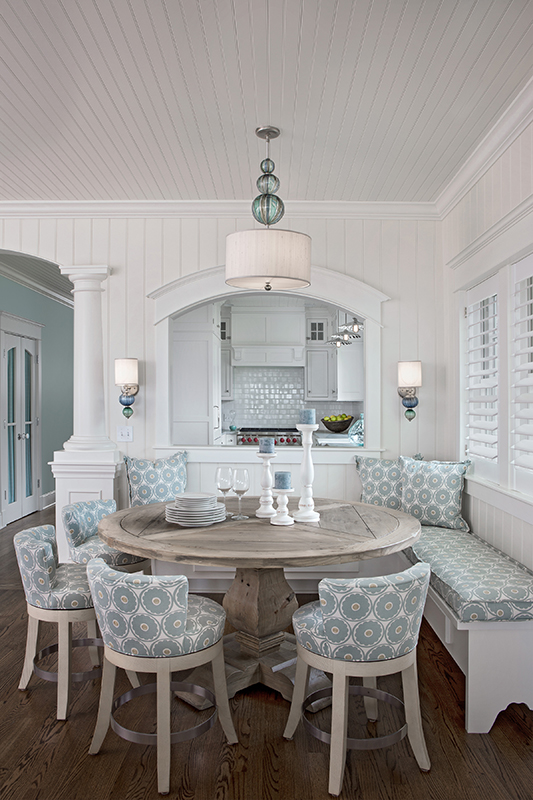
This primal appeal might explain why banquettes have transcended their reputation as space-saving solutions for cramped quarters. Even homeowners with generous square footage are incorporating these sophisticated seating arrangements into their designs. The reason? Banquettes create what designers call “architectural embrace” – a feeling of being held by your environment.
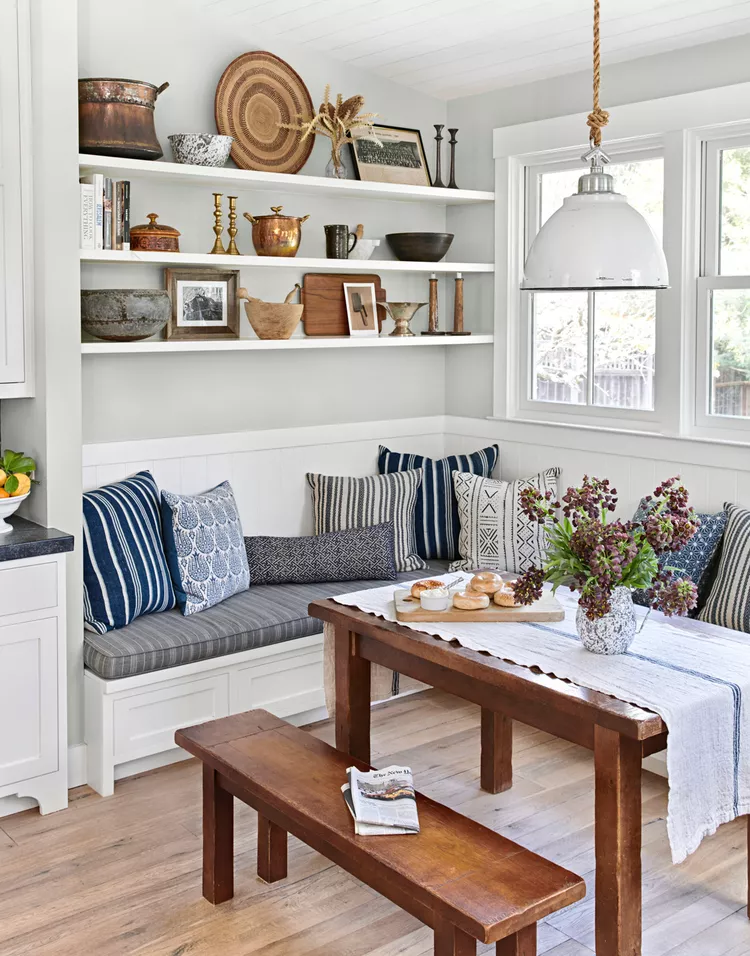
The Psychology of Curved Spaces
There’s science behind why we find dining nooks so appealing. Research in environmental psychology suggests that curved architectural elements reduce stress and promote social interaction. A banquette’s typical L-shape or gentle curve naturally draws people together, creating what sociologists call “sociopetal space” – environments that encourage interaction.
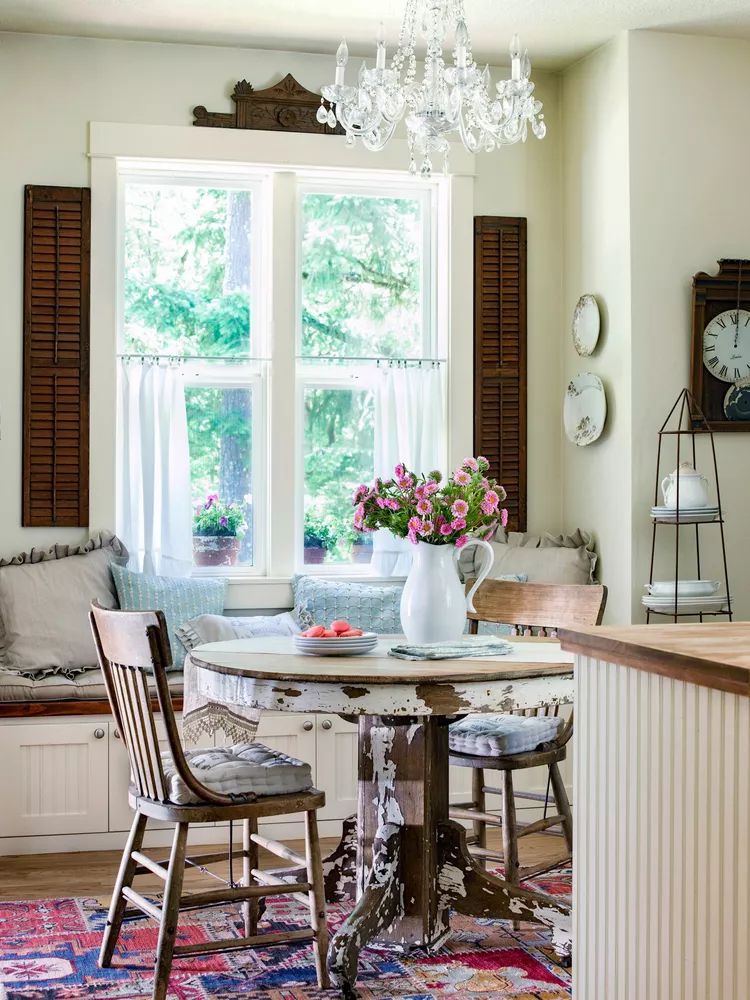
This effect is particularly powerful in family homes, where the casual nature of banquette seating seems to dissolve the invisible barriers that sometimes arise around more formal dining arrangements. Children are more likely to linger over homework at a comfortable banquette, and adults find themselves naturally settling in for longer conversations.
Breaking the Rules: Modern Interpretations
While traditional banquettes often featured vinyl upholstery and rigid geometric designs, contemporary versions are breaking all the rules. There is a revolution in materials and forms. People are requesting everything from vintage leather that ages beautifully to performance velvet that stands up to daily use while maintaining its luxurious feel.
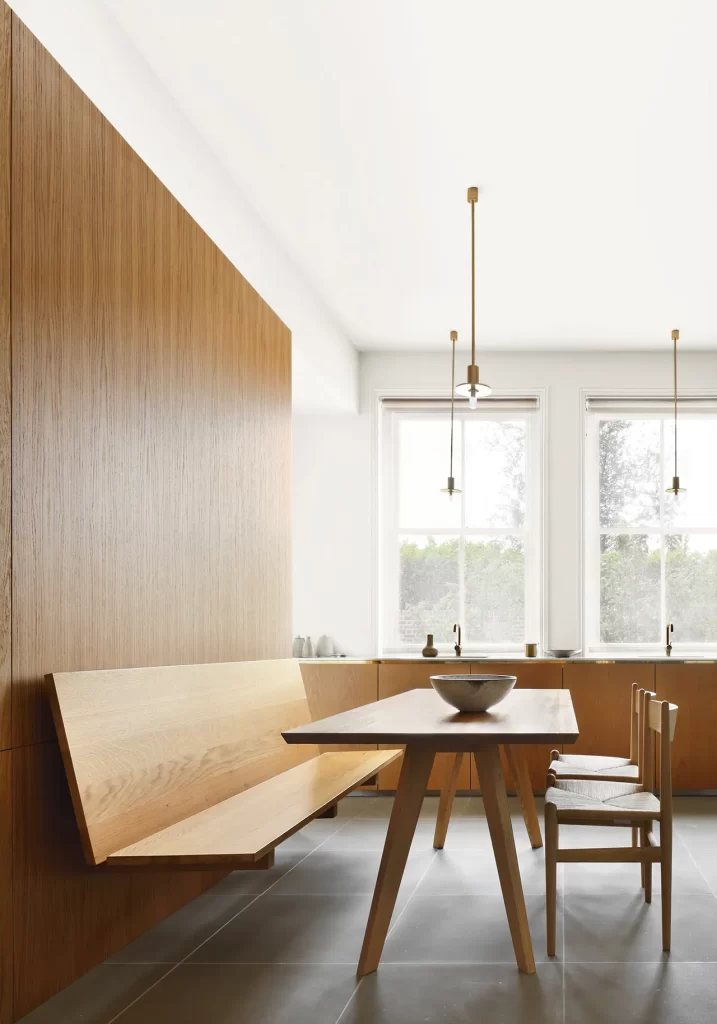
One particularly intriguing trend is the “floating” banquette – seating that appears to hover above the floor, supported by hidden brackets. This architectural sleight of hand creates an airy feel while maintaining the cozy embrace that makes banquettes so appealing. Some designers are taking this concept further by incorporating subtle lighting beneath the seating, creating an ethereal glow that transforms the dining nook into an art installation after dark.
The Storage Solution You Never Knew You Needed
Perhaps the most practical evolution in banquette design is the sophisticated approach to storage. Gone are the clunky lift-up seats that required Olympic-level strength to access. Today’s solutions include smooth-gliding drawers, clever compartments for wine storage, and even climate-controlled spaces for preserving table linens.
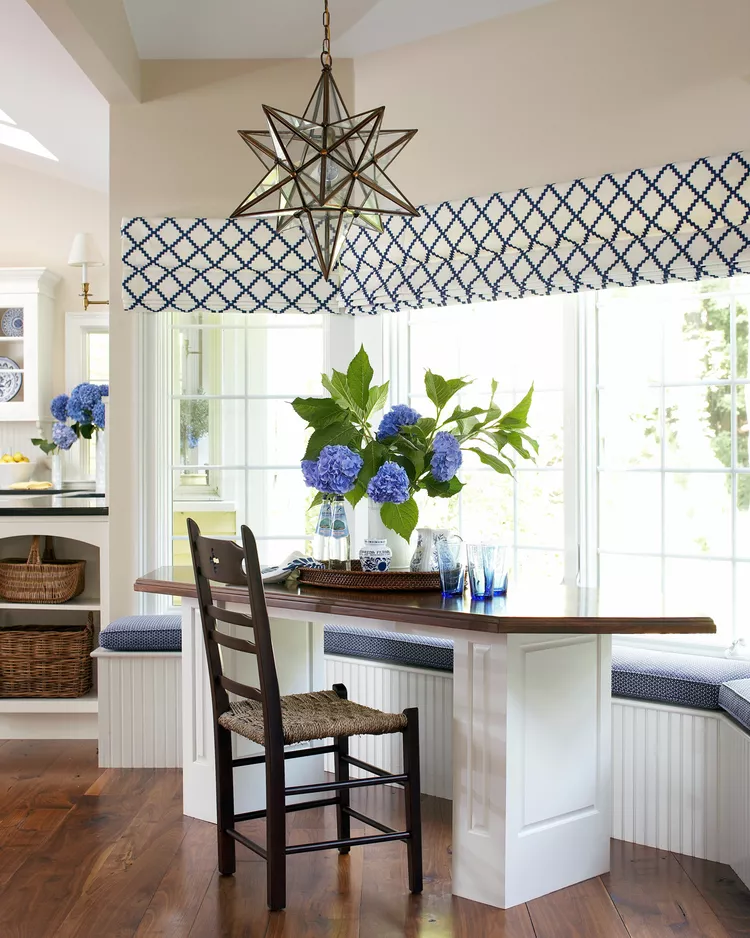
Designers are designing banquettes that work as hard as the kitchens they’re in. One recent project included a pull-out step stool hidden in the toe kick, making it easier for children to climb up to the table. Another featured a series of narrow vertical pullouts perfect for storing placemats and napkins.
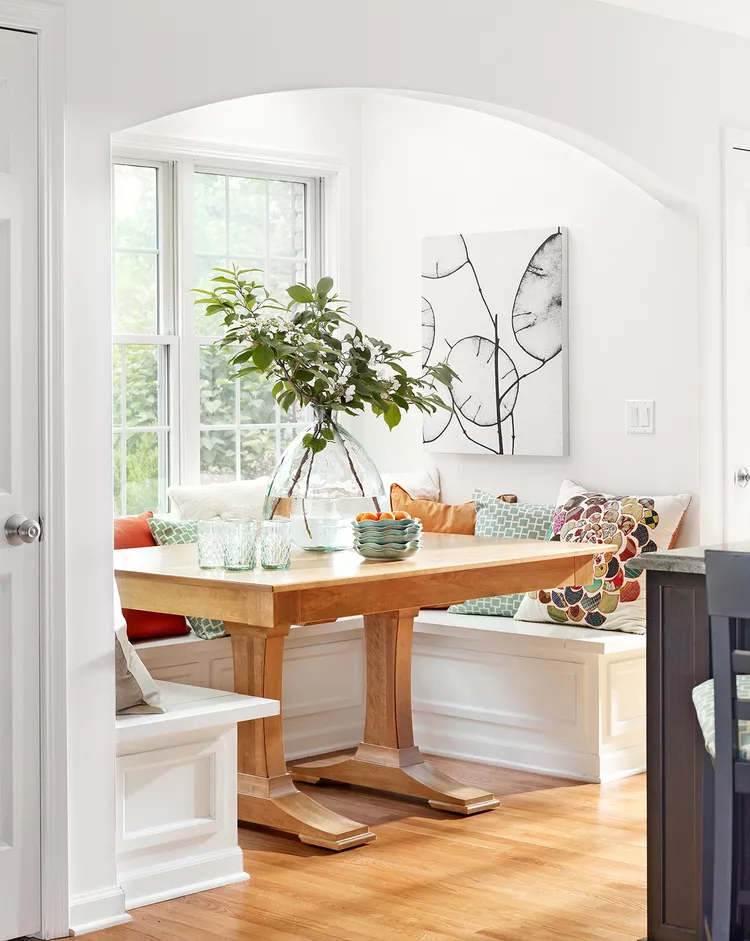
The Art of Proportion
The secret to a successful banquette lies in its proportions. Too deep, and diners feel like they’re perching on the edge of their seat; too shallow, and the comfort factor disappears. The ideal depth typically ranges from 24 to 30 inches, with the sweet spot at 26 inches for most applications. Seat height should allow for a comfortable 12-inch drop to the table surface – though this can be adjusted based on table height and the primary users of the space.
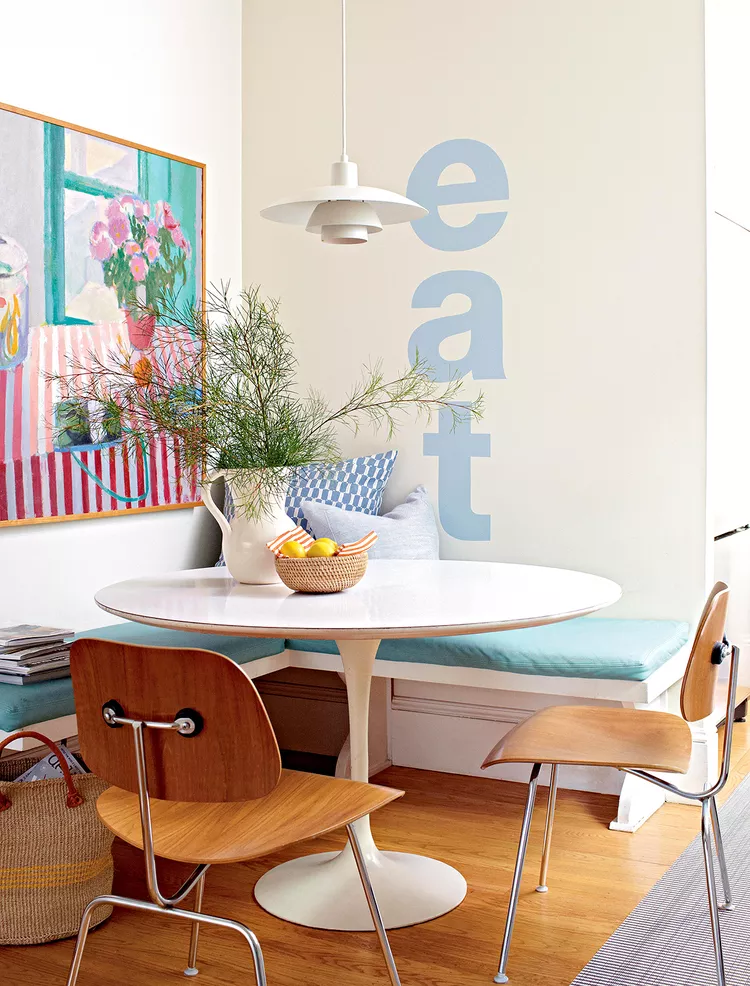
It’s about creating a micro-environment where everything is in perfect balance. When the proportions are right, people naturally adopt healthier postures without even thinking about it.
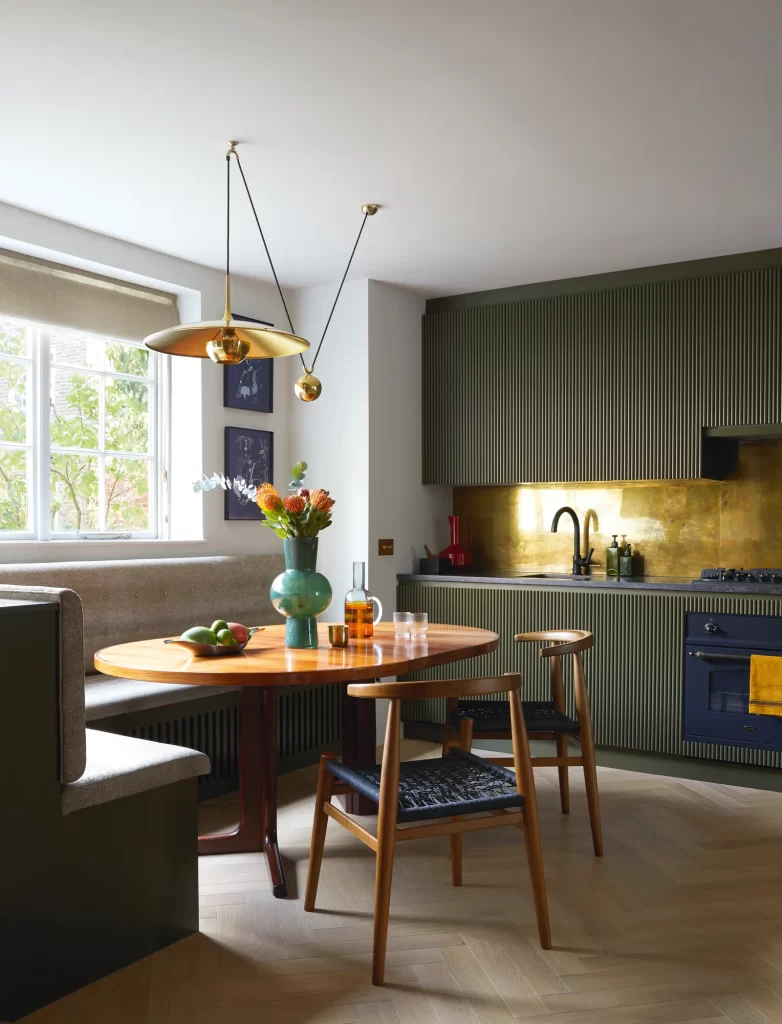
Beyond the Kitchen
While kitchen nooks remain the most popular application for banquette seating, innovative designers are bringing this concept into unexpected spaces. Home offices are being transformed with built-in seating that doubles as a meeting space and reading nook. Formal living rooms are finding new life with conversation areas centered around a banquette, and even outdoor spaces are getting the banquette treatment with weather-resistant materials that maintain the comfort factor.
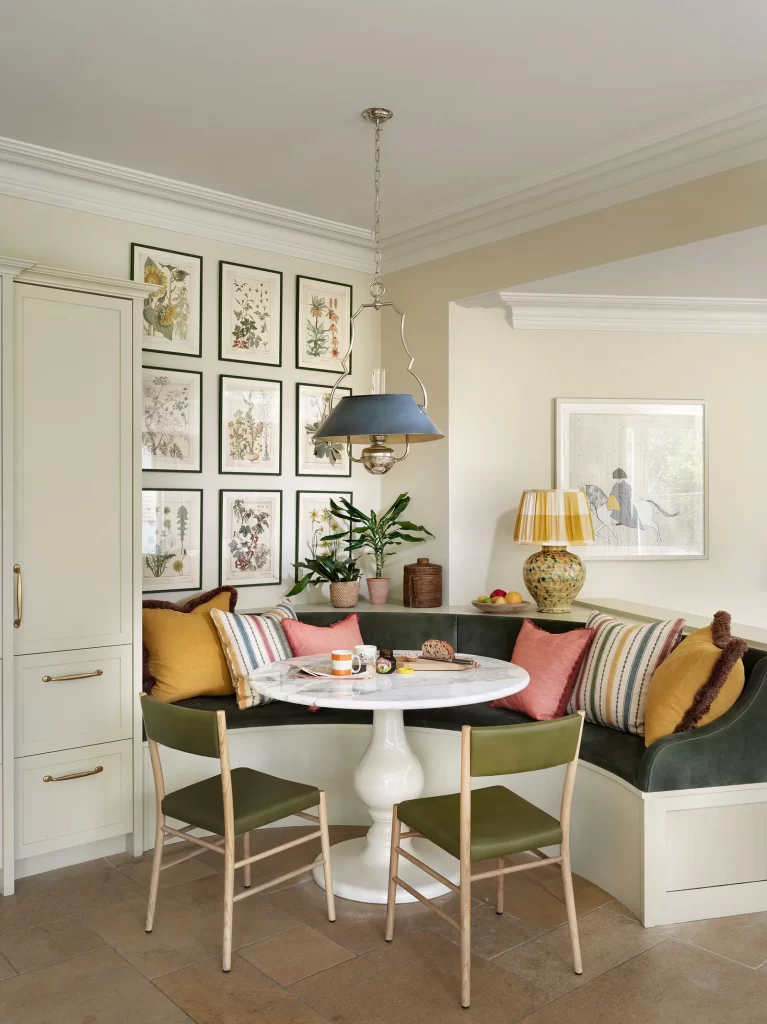
The versatility of modern banquette design speaks to our evolving relationship with home spaces. As the lines between formal and casual living continue to blur, these adaptable seating arrangements offer a bridge between traditional dining and the way we really live.
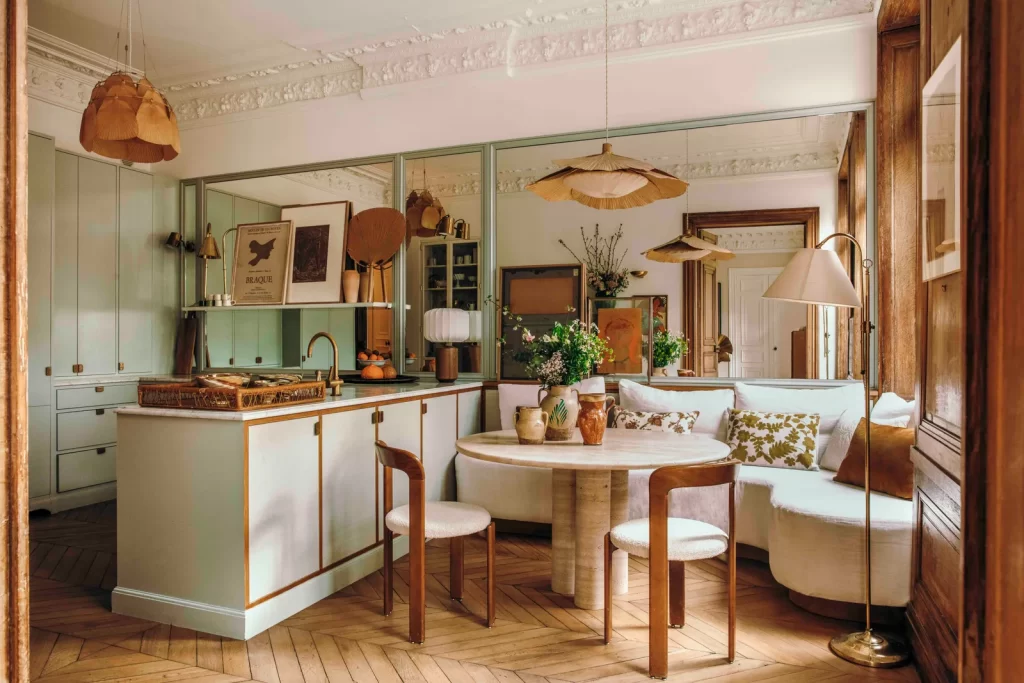
Whether you’re working with a cozy corner or a grand space, the key to a successful banquette lies in understanding how you’ll use it. Will it be a casual spot for morning coffee? A homework station? The site of regular dinner parties? Let your lifestyle guide the design, and you’ll create more than just a seating area – you’ll create a destination within your home that draws people together, encourages lingering conversations, and makes every meal feel a little more special.
After all, isn’t that what home is really about?
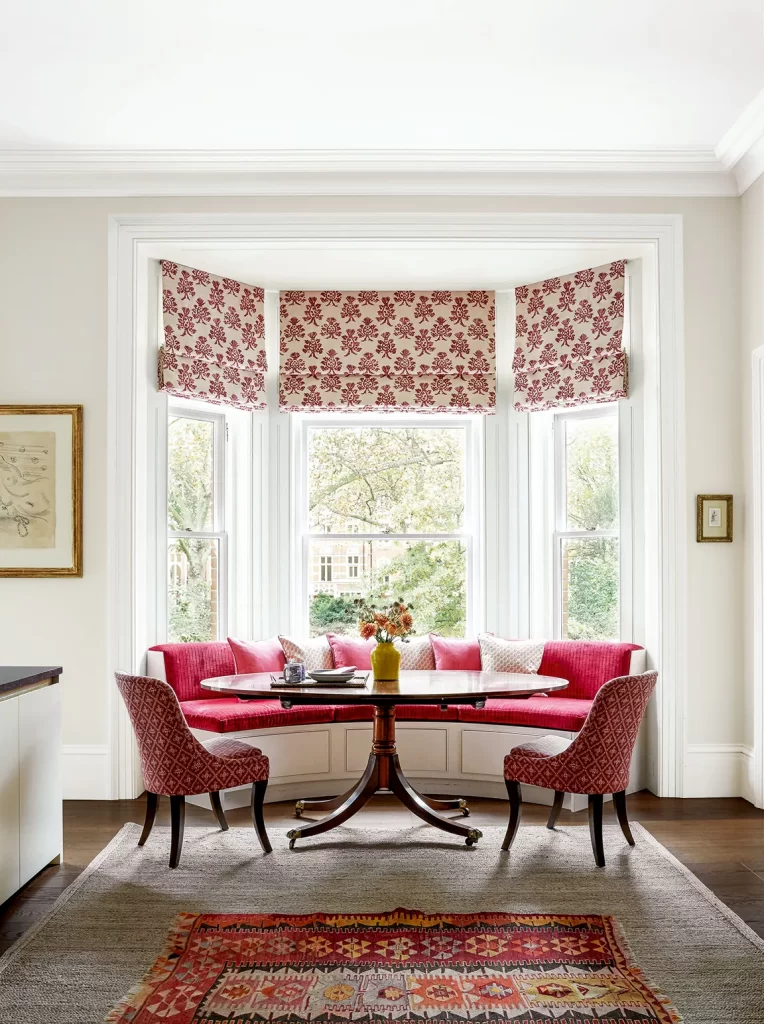
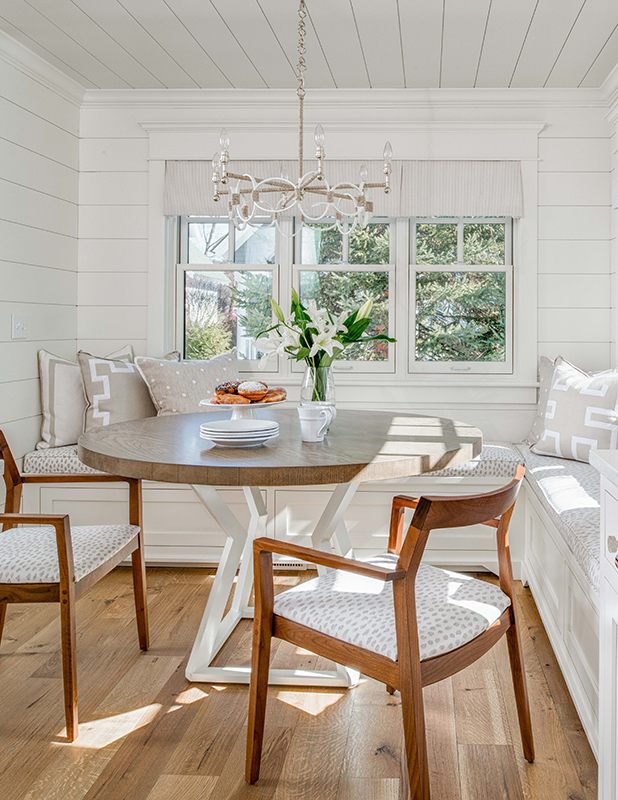
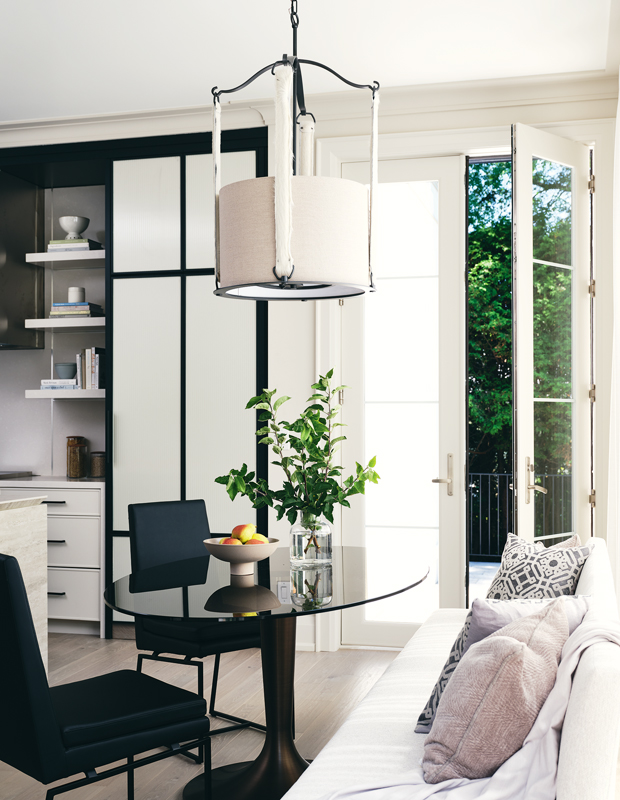
Nuts and Bolts of Banquette Seating
Whether you want a built-in or a freestanding bench, there are so many designs to help you make the most of your space. You might be surprised at how versatile banquette seating can be.
From sleek, modern lines to plush, tufted cushions, there’s a style for any home décor. It’s not just about saving space—banquettes add personality and make everyday gatherings feel a little more special, honestly.
Banquette Seating Essentials
Banquette seating works for dining, kitchen, and even commercial spaces. It saves space, adds comfort, and gives you loads of design flexibility.
What Is Banquette Seating?
Banquette seating means built-in or freestanding benches placed against a wall or around a table. You’ll spot this look in restaurants and cafes, but it’s just as good in kitchens and dining rooms at home.
The seating is usually upholstered, so you get a plush and comfortable spot to linger. A banquette can run along straight walls, fill corners, or even form U-shapes in breakfast nooks.
It adapts easily to awkward layouts. Homeowners and designers pick banquettes because they squeeze more seating into less space.
Unlike regular chairs, banquettes form a continuous bench, which makes it easy to create a communal and intimate dining area. The design invites people to gather closer together—sometimes that’s exactly what you want.
Key Features of Banquette Seating
Banquette seating stands out for its flexibility and built-in nature. Many models come with integrated storage under the seat, like drawers or hinged tops—super handy for linens, tableware, or kitchen tools.
This is a lifesaver in homes where storage always feels tight. Upholstery adds a soft touch and lets you customize fabric, color, and tufting.
Banquettes can have backs or not, but most have padded backs for more comfort. You can tweak the height and depth to fit your space and dining table.
Some banquettes are freestanding and easy to move, but built-ins give a more permanent, tailored vibe. Materials run the gamut from wood and vinyl to leather and fabric, so you’ve got choices.
Types of Banquette Seating
There are a few common types, each with its own perks. Here’s a straightforward table of the main styles:
| Type | Description |
|---|---|
| Straight | Bench runs along a single wall |
| L-Shaped | Wraps around two adjoining walls |
| U-Shaped | Encloses three sides of a table |
| Corner | Fits snugly into a 90-degree room corner |
| Freestanding | Portable; not built into the room |
The L-shaped banquette is great for breakfast nooks and is super space-efficient. U-shaped options give you seating on three sides and work well for bigger gatherings.
Straight benches fit nicely in narrow spaces or along open walls. Simple, but effective.
Benefits for Home and Commercial Spaces
Banquette seating really shines when you need to use space efficiently. In homes, banquettes create cozy breakfast spots, family dining areas, or even reading nooks in spaces that might otherwise go ignored.
The built-in design helps keep walkways clear—especially in smaller kitchens or apartments. For restaurants and cafes, banquettes let you seat more guests per square foot than individual chairs.
Continuous seating makes it easy to fit groups of different sizes. Storage options under the seats help staff keep supplies handy without cluttering the dining area.
With so many materials and finishes, you can match the design to your style—modern, classic, casual, or a bit more upscale. Banquettes are practical seating, but they also bring comfort and a welcoming vibe to any room.
Designing and Installing Banquette Seating
Banquette seating is practical and stylish, offering customizable solutions for kitchens, dining areas, and breakfast nooks. Planning your banquette means picking styles, materials, and a layout that works for your comfort and space.
Popular Styles and Layout Ideas
You’ve got several popular banquette setups to choose from. L-shaped banquettes tuck into corners and maximize seating for smaller spaces.
U-shaped designs feel cozy and enclosed, and they’re best for bigger areas or if you love to entertain. A straight banquette runs along one wall and is a solid choice for narrow dining spaces or as a bench in entryways.
Built-ins can include hidden storage under the seat, which is great if your kitchen needs to multitask. Freestanding options give you flexibility if you want to mix things up later.
Most styles work with both modern and traditional decor. You can always add accent pillows or upgraded upholstery to make it your own.
Choosing Materials and Fabrics
The best materials depend on how you’ll use the banquette. For families or heavy use, durable, stain-resistant fabrics like performance polyester, microfiber, or treated cotton blends make life easier.
Leather looks upscale, but you’ll need to condition it now and then. For the base and frame, hardwoods like oak or maple last a long time and don’t warp easily.
Plywood with veneer is a budget pick, but it’s not quite as tough. Foam density matters too—medium-firm foam keeps things comfy and holds its shape.
Pick colors that fit your décor. Neutrals are always safe, but bold upholstery can give the room a fun pop.
Measuring and Planning for Custom Fit
Getting the measurements right is essential if you want your banquette to fit. Start by mapping out your space, noting wall lengths, any weird corners, and your table size.
Standard banquette seats are usually 18–20 inches high, with a seat depth of 16–20 inches. Give each person at least 24 inches of width for comfortable seating.
If you’re installing in a nook, check the pitch (the angle of the backrest) and armrest height for comfort. Make sure storage under the seat doesn’t mess with legroom.
Adjust the dimensions if kids or accessibility needs are in play. It helps to sketch things out or use tape on the floor to see how your banquette will fit before you build or buy.
Maintenance and Care Tips
Routine care keeps your banquette looking new. Vacuum crumbs and dust from crevices every week, especially if you store things under the seat.
If you’ve got fabric upholstery, tackle spills right away with a bit of mild soap and water. Always check the care label before you go for a deeper clean—some fabrics can be a bit picky.
In busy homes, slipcovers make life easier when it comes to cleaning. Try rotating and fluffing the cushions now and then so they don’t wear out unevenly.
For wood or leather parts, just dust the surfaces and go over them with the right cleaner every few months. That helps keep the finish looking sharp.
Take a look at hardware and hinges on storage compartments from time to time. Make sure they feel secure and open or close without a fight.
